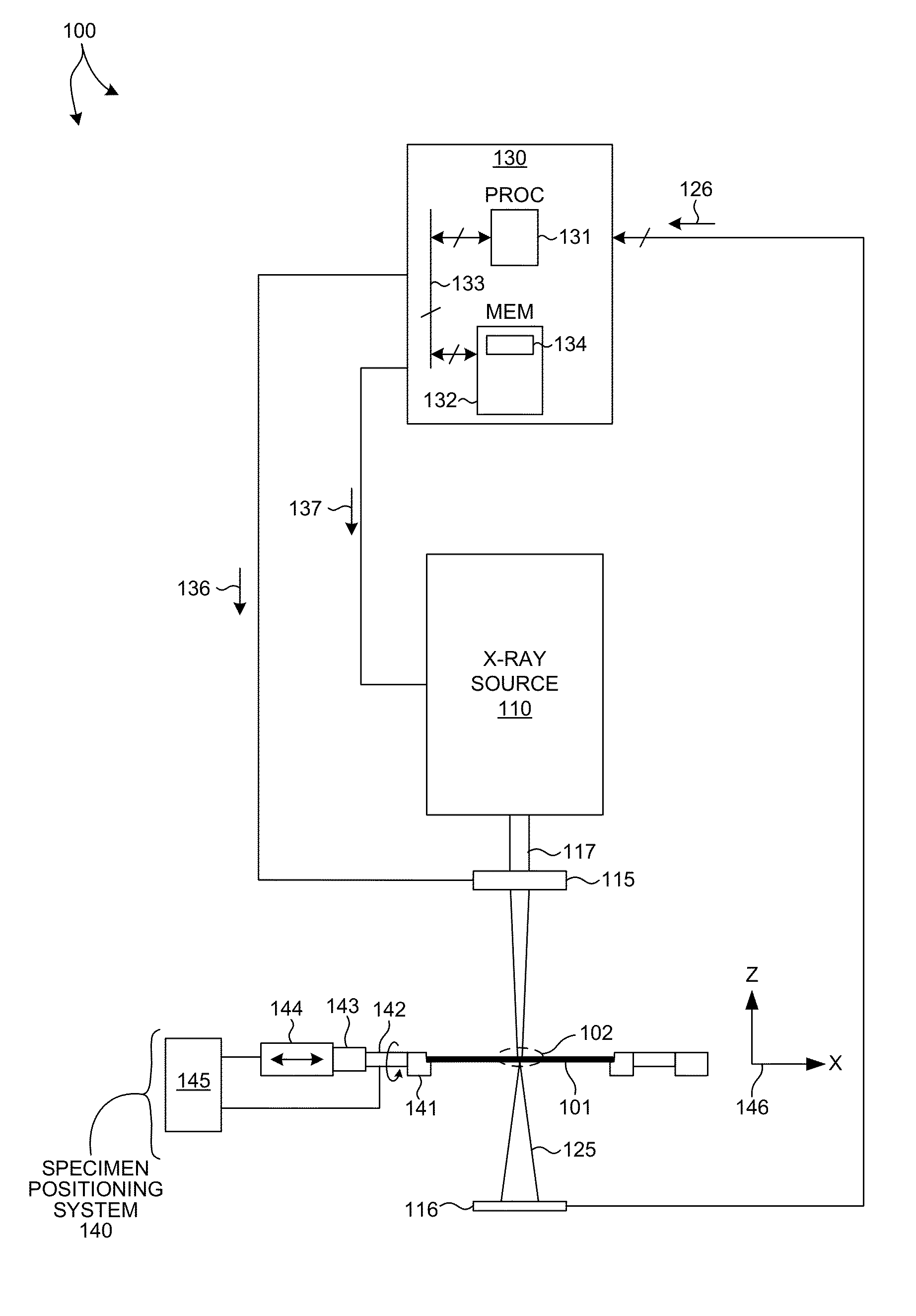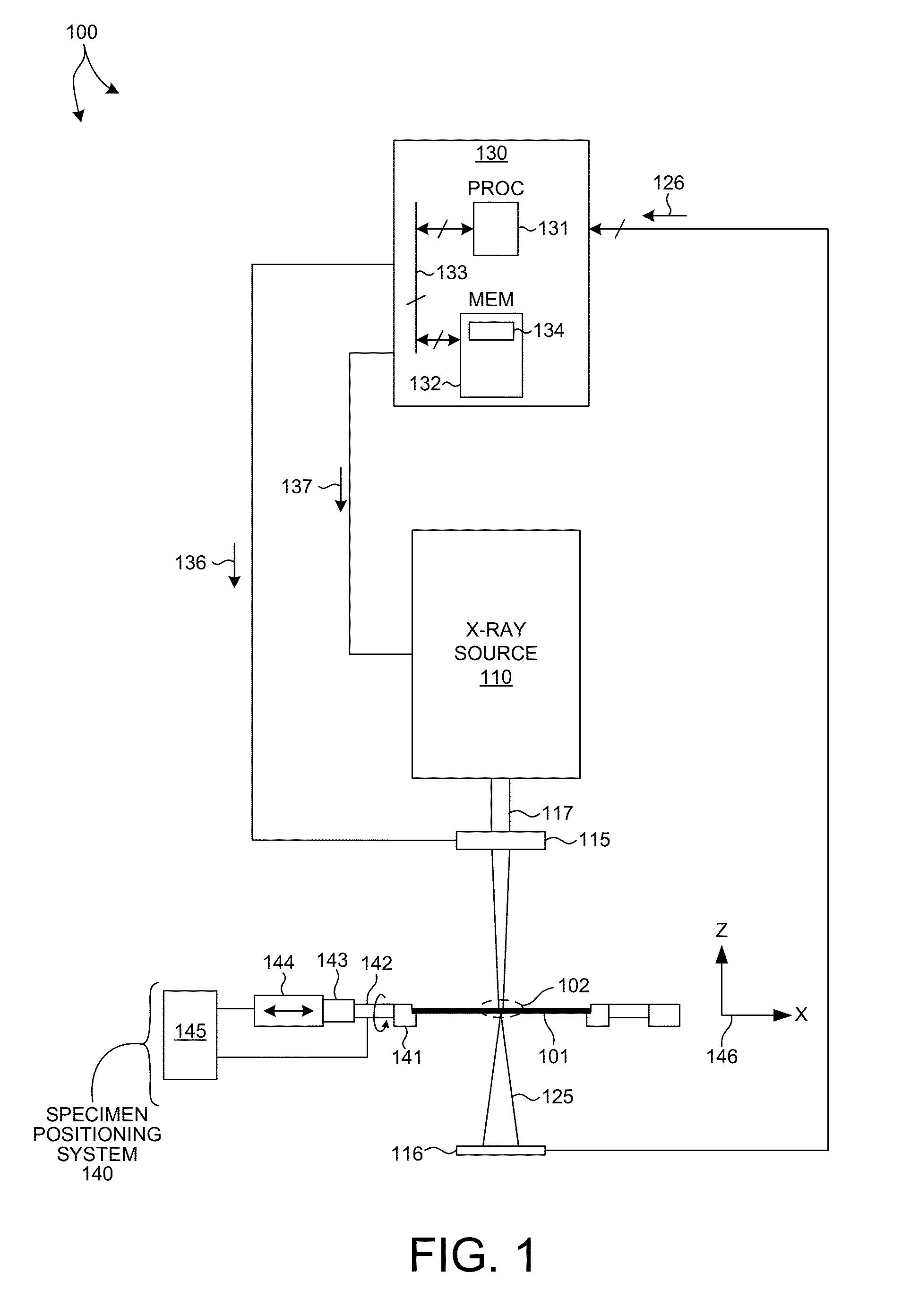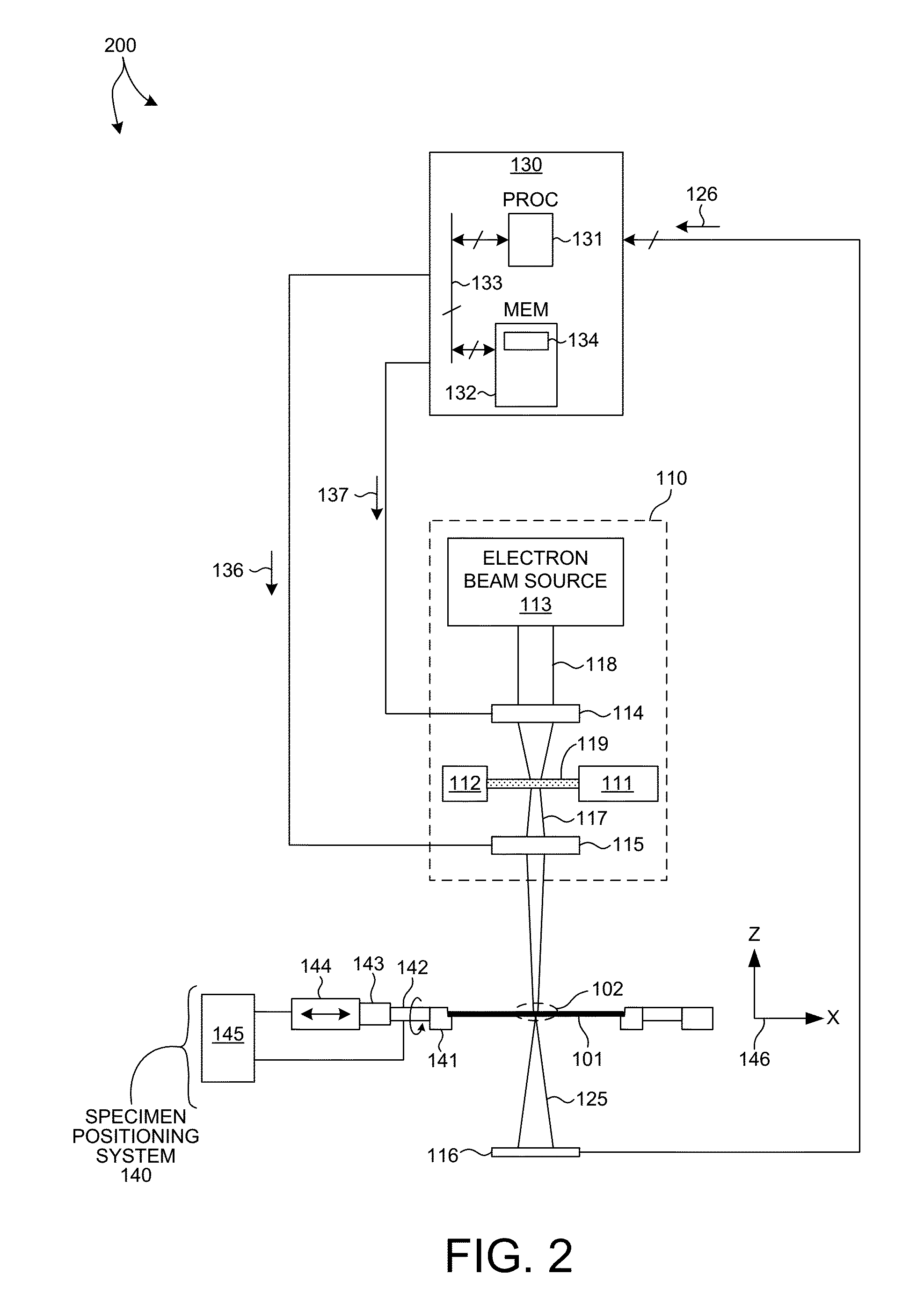Scatterometry-Based Imaging and Critical Dimension Metrology
a critical dimension and scattering technology, applied in the field of meteorological systems and methods, can solve the problems of difficult optical radiation penetration to the bottom layer, difficult characterization, and increased difficulty in characterization, and achieve the effect of improving the measurement performan
- Summary
- Abstract
- Description
- Claims
- Application Information
AI Technical Summary
Benefits of technology
Problems solved by technology
Method used
Image
Examples
Embodiment Construction
[0026]Reference will now be made in detail to background examples and some embodiments of the invention, examples of which are illustrated in the accompanying drawings.
[0027]Methods and systems for performing measurements of semiconductor structures and materials based on scatterometry measurement data are presented. Such systems are employed to measure structural and material characteristics (e.g., material composition, dimensional characteristics of structures, etc.) associated with different semiconductor fabrication processes.
[0028]More specifically, scatterometry measurement data is used to generate an image of a measured structure based on the measured intensities of the detected diffraction orders. In some examples, the image is compared to structural characteristics estimated by a geometric, model-based parametric inversion of the same scatterometry measurement data. Discrepancies are used to update the geometric model of the measured structure and improve measurement perfor...
PUM
| Property | Measurement | Unit |
|---|---|---|
| roughness | aaaaa | aaaaa |
| size | aaaaa | aaaaa |
| wavelengths | aaaaa | aaaaa |
Abstract
Description
Claims
Application Information
 Login to View More
Login to View More - R&D
- Intellectual Property
- Life Sciences
- Materials
- Tech Scout
- Unparalleled Data Quality
- Higher Quality Content
- 60% Fewer Hallucinations
Browse by: Latest US Patents, China's latest patents, Technical Efficacy Thesaurus, Application Domain, Technology Topic, Popular Technical Reports.
© 2025 PatSnap. All rights reserved.Legal|Privacy policy|Modern Slavery Act Transparency Statement|Sitemap|About US| Contact US: help@patsnap.com



